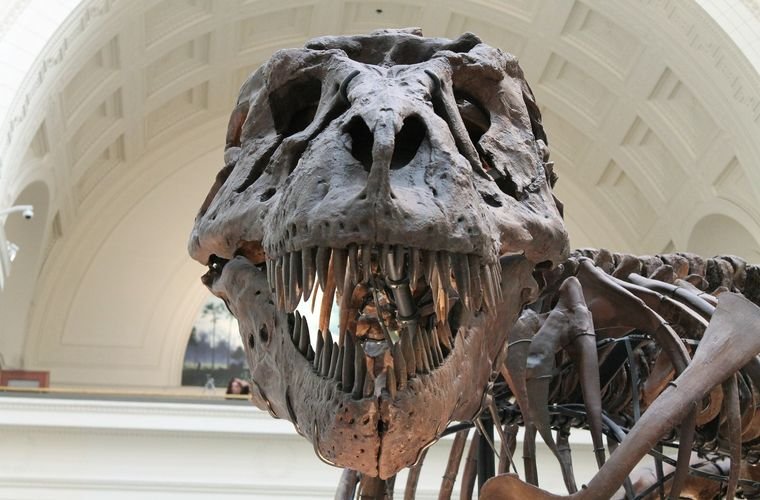Dinosaurs, along with being massive reptilian beasts from Earth’s ancient past, have remained beloved icons of popular culture for decades. With films like Jurassic Park, people have come to see dinosaurs as terrifying predators with few to no weaknesses. But new research has revealed a possible weakness to these hunters. In a new study published in Scientific Reports, researchers from Ohio University have found evidence of a possible respiratory infection in a dinosaur fossil.
Background: Respiratory Infections in Birds
Just like humans, birds can get sick and have sore throats. One of the most common respiratory tract infections is called Aspergillosis, which is caused when fungal spores become lodged in the bird’s airway. There are two types of Aspergillosis, acute (which affects younger birds) and chronic (affecting older birds). Both can have serious symptoms, such as lack of appetite and difficulty breathing. If not treated with antifungal drugs, the infection can lead to death. While dinosaurs are distantly related to birds, they may have suffered from the same disease, as new research suggests.
Analysis: Dinosaur Sickness
From a diplodocid fossil found in Montana, nicknamed “Dolly,” scientists from Ohio University may have found evidence showing a dinosaur respiratory infection. The diplodocid fossil dated back to the late Jurassic Period (around 150 million years ago). In looking at several neck bones, the researchers identified new abnormal bony protrusions, with weird shapes and textures. These protrusions seemed to, at one time, possibly penetrate the air sacs of the dinosaur, causing problems for the respiratory system. The researchers theorized that this could have caused flu-like or pneumonia-like symptoms, and may have even been the death of the animal.
The scientists imaged the protrusions using CT scanning. From the images, they determined the protrusions were most likely made in response to an infection. According to researcher Cary Woodruff: “Given the likely symptoms this animal suffered from, holding these infected bones in your hands, you can’t help but feel sorry for Dolly. We’ve all experienced these same symptoms—coughing, trouble breathing, a fever, etc.—and here’s a 150-million-year-old dinosaur that likely felt as miserable as we do when we’re sick.” From the placement of the bony protrusions, the researchers theorized that the dinosaur respiratory infection was caused by fungal spores, similar to aspergillosis. As the landscape during the late Jurassic Period was full of ancient plants which were still evolving flowers and other structures, fungal spores were most likely quite prominent as they have been shown to be a more ancient structure.
Outlook: The Evolution of Diseases
As this fossil is one of the earliest markers for a possible dinosaur respiratory infection, scientists can use this evidence to better understand how diseases evolved in the past. “This fossil infection in Dolly not only helps us to trace the evolutionary history of respiratory-related diseases back in time,” explained Woodruff, “but it gives us a better understanding of what kinds of diseases dinosaurs were susceptible to.” Perhaps the societal picture of a terrifying hunter may not be so accurate after all. Instead, an image of a more relatable species may come to mind, as dinosaurs seemed to have shared similar diseases as us.
Kenna Castleberry is a staff writer at the Debrief and the Science Communicator at JILA (a partnership between the University of Colorado Boulder and NIST). She focuses on deep tech, the metaverse, and quantum technology. You can find more of her work at her website: https://kennacastleberry.com/

